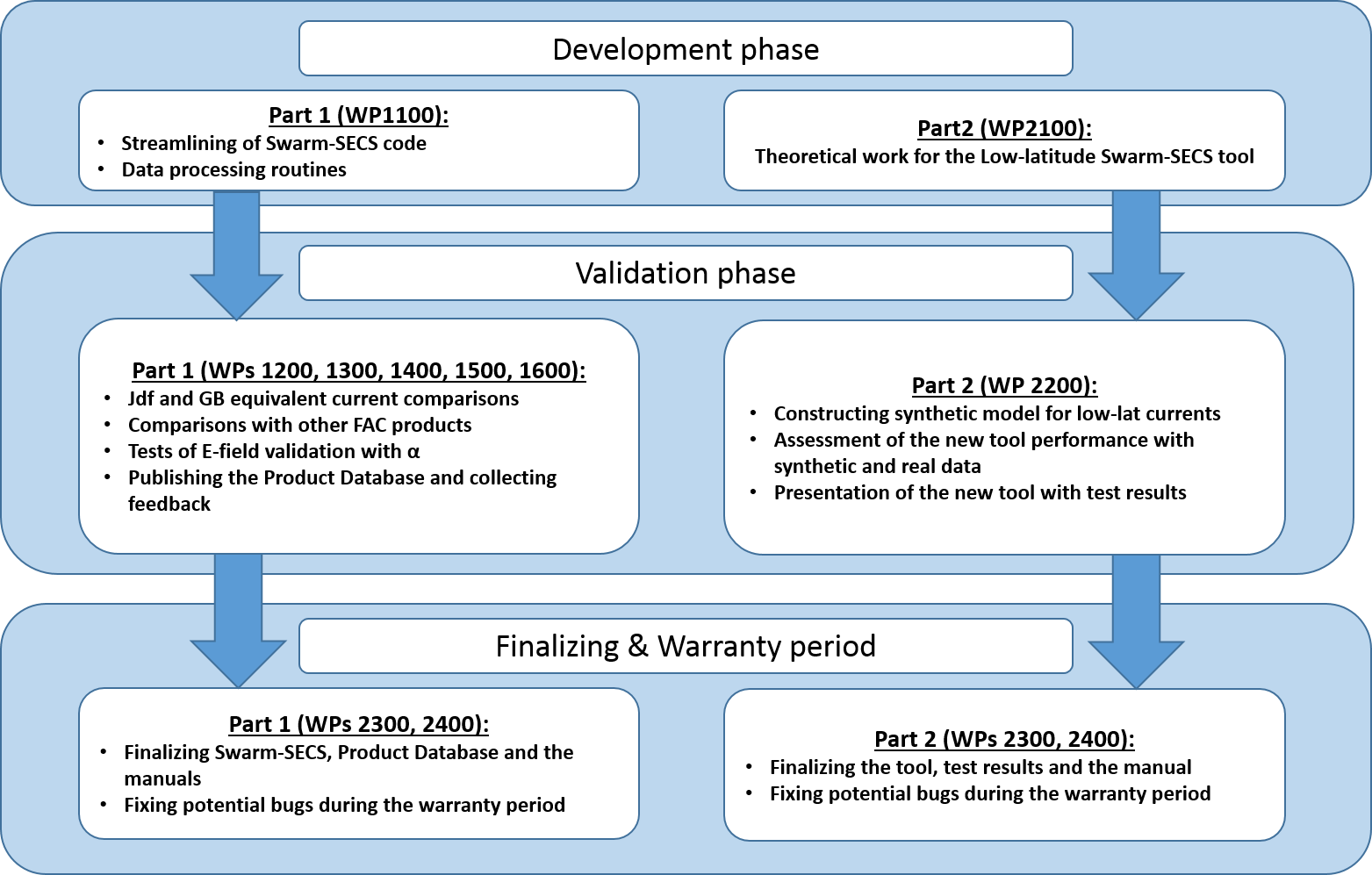ESA Swarm mission
Swarm-Cluster Synergy Study
Internal |
This project investigates how the method of Spherical Elementary Current Systems (SECS) can be applied to Swarm magnetic and electric field data in order to create new data products estimating electric currents and conductances in the auroral ionosphere. The Swarm-SECS concept has been previously tested in the ESA project "Swarm-Cluster Synergy Study" with synthetic data describing the conditions at high latitudes. In this continuation project feasibility tests will be conducted with real Swarm observations and the results will be validated with ground-based ionospheric observations and already existing Swarm L2 products. The validated products will be released for open use and the database will be further refined according to feedback from the Swarm user community. As a totally new opening in Swarm data analysis we will investigate the opportunity to expand the SECS approach also to middle and low latitudes. This task will include expansion of the SECS theory and testing of the new formulas with synthetic and real data. This project started on August 10, 2016 and its anticipated duration is 24 months.
The Consortium conducting the survey consists of three research institutes:
Finnish Meteorological Institute, Arctic Research unit (FMI, Contractor)
University of Oulu, Space Physics unit (UO/Space, Sub-contractor)
National Institute for Laser Plasma and Radiation Physics, Institute for Space Sciences, Romania (ISS, Sub-contractor)
The work in Swarm-SECS will be conducted in three phases according to the flow chart shown below.

|